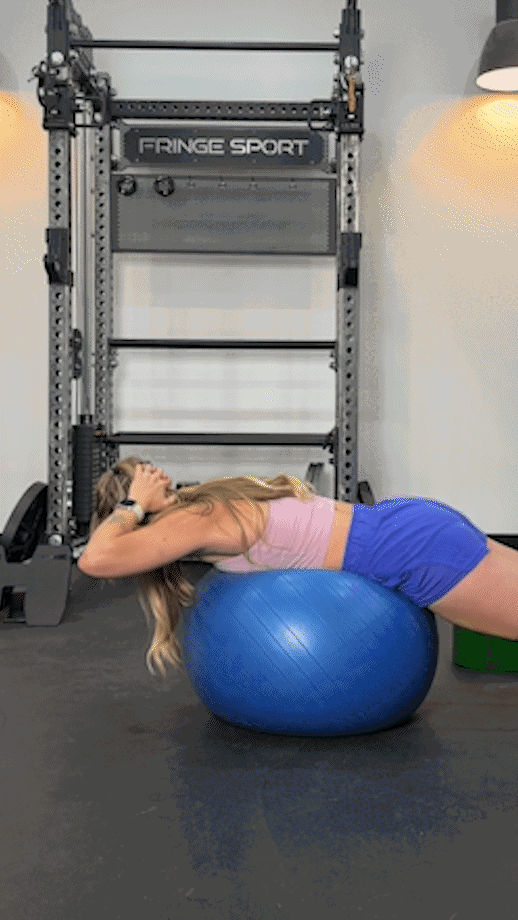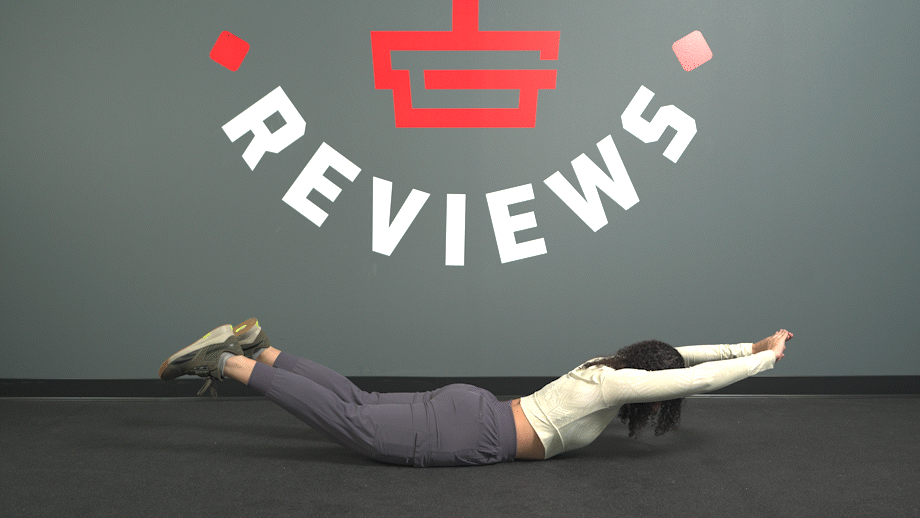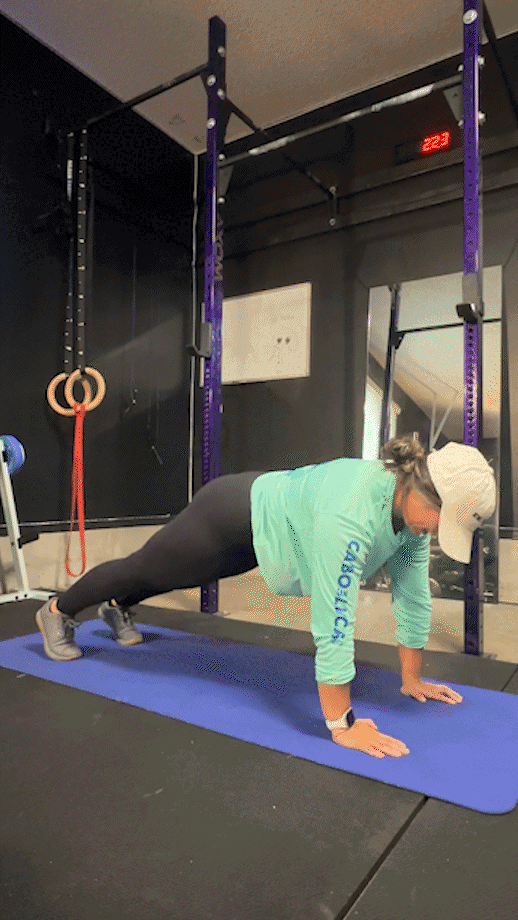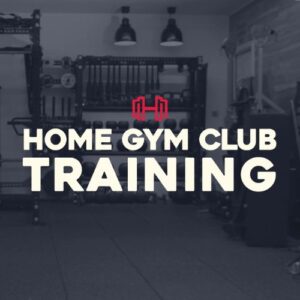While most of us don’t have the space in our garage gyms for a full set of industrial exercise machines, especially some of the less versatile ones like a Roman chair, that doesn’t mean that you can’t still include the erector spinae muscles in your core exercises. Read on for our tips on how to do back extensions at home!
Why Do Back Extensions?
The early-2000s buzzword “core” usually means one thing to people: a six-pack.
The late-2000s buzzword “posterior chain” usually means one thing to people: glutes.
Both of these perceptions miss the importance of the lower back1 on both lifting prowess and daily movement.
Back pain can sometimes mean back weakness2, and the weak link in almost every squat and deadlift in gyms around the country involves the trunk (low back, abs, obliques).
Don’t believe me? Then why can you leg press triple what you can squat? Why do you wear a weightlifting belt when you squat but not when you leg press?
According to a study from 20023, back extensions are a way to directly train the muscles of the lower back without overloading the rest of the body.
6 Back Extension Variations to Do at Home
Even if you have access to the ultimate home gym, sometimes simple is better. When it comes to crafting core stability (and great excuses to get out of doing chores due to crippling low back DOMS), these back extension alternatives are aces.
Floor Back Extension
Why do it: I remember being in elementary school and these being part of something similar to the old Presidential Fitness Test (and I could never do them). We called them “Sea Lions” because the top of the motion looks just like a beachmaster surveying the surf.
This is perfect for an at-home workout even without a home gym. You get to develop low back strength while also working on your trunk flexibility.
How to do it:
- Lie face down on the ground.
- Put your hands behind your head, linking your fingers together.
- Squeeze your shoulder blades hard to stabilize your upper body.
- Push your pelvis into the ground and raise your head up as high as you can with no low back pain.
- Hold the top position for a count of two.
- Slowly return to the starting position.

Table or Bench Reverse Hyperextension
Why do it: While you can buy a bulletproof reverse hyperextension machine, this variant is actually closer to the original posterior chain concept machine used by Westside Barbell (it was basically a box with some straps hanging down from it).
A proper reverse hyper is not just one of the best back extension alternatives, it is one of the best posterior chain builders4, period. Along with the glute-ham raise, it is among the most used pieces of equipment in any strength-focused gym.
When loaded properly, it can also be a prime builder of the gluteus maximus (glutes) and hamstrings.
You will need a table, weight bench, or Smith machine roughly as tall as your hip crease to do this.
How to do it:
- Lie face down on the table. You can use a cushion or towel for comfort.
- Let your lower body dangle down and slightly bend your knees to around a 45-degree angle.
- Brace your abs and low back and bring your legs as close as you can to parallel with the ground. Don’t swing your legs, just bring them up under control.
- Return your legs to their starting position—don’t swing them under the table and over-round the low back.

Stability Ball Back Extension
Why do it: This variant uses a stability ball to achieve the proper angle between the upper body and the floor for a back extension. Of all the alternative exercises, this forces you to utilize your stabilizer muscles the most. (I’ve always thought this should be called an instability ball… semantics.)
How to do it:
- Lie face-down across a stability ball, with your weight resting on your stomach and hips.
- Place your feet a little wider than shoulder width for good balance. (You can place them against a wall for extra stability.)
- Relax your upper body, curving it around the ball slightly to lower your head toward the ground.
- Reverse directions and lift your upper body, squeezing the muscles in your legs, glutes, and core as you come up until your body is in a straight line.
- Hold this position for a few seconds, then relax your upper body back to the starting position.

Superman Stretch
Why do it: This is one of the alternative exercises that requires literally no equipment whatsoever. In addition to the lower back, this works the full torso stability while also lighting up the glutes.
This can be used as a warm-up, midday pick-me-up workout, or as a finisher. You can do this for reps, or you can focus on holding the top position for time.
How to do it:
- Lie face down on the ground.
- Extend your arms out in front of you (over your head).
- Squeeze your glutes, shoulder blades, and lower back muscles.
- Lift your legs and arms off the ground as far as is comfortable and hold that position. You can move your arms for an added upper-back element.
- Return to the starting position.

Plank Hip Extension
Why do it: This is similar to a Superman stretch, but done from a plank position. If you like feeling your glutes burn, this is the exercise for you.
You will need to have a reasonable amount of core strength to hold the position through the entire exercise. This can be a humbling exercise.
How to do it:
- Get into a plank position.
- Maintaining your spine angle, bring your left foot off the ground.
- Bring your left heel up to the ceiling as high as you can.
- Return your left foot to the ground.
- Repeat with your right foot.

Resistance Band Deadlift
Why do it: This is a simple way to get a sweet lower back pump using some bodybuilding techniques. Notice this is the only non-bodyweight exercise on the list.
The resistance on this will be light, so the goal is to really focus on keeping tension on the muscle.
Note that because the tension on this back extension alternative is at the top of the motion, we will start at lock-out rather than from the floor (like in a barbell or dumbbell deadlift). Really using speed to fight against the bands and snapping your hips forward makes this a great exercise for the glutes.
How to do it:
- Choose an appropriate resistance band (make it light!).
- Step into the middle of the band with your feet shoulder width apart.
- Hold the ends of the resistance band so they are taut when you’re in a standing position.
- Push your hips WAY back to start the motion. As your hips go back your torso will bend forward.
- When you get to a depth where going any lower will cause your lower back to round, stop there.
- Drive your hips forward, pulling the band tight as you return to the standing position.
- Push your hips back and begin your descent for the next repetition right away.

Trainer Tips for Form
As a personal trainer, there are several ways I reinforce proper form for my clients during a glute exercise that involves an explosive hip hinge, like a kettlebell swing or deadlift variation. Here are a couple of my tips:
Squeeze and Hold
All of the exercises listed above can benefit from pausing at the top of the movement (the point of greatest contraction).
Back extension exercises use the erector spinae to move the upper body through space, but a function of the low back muscle groups is also to stabilize.
Flexing hard at the very top burns the heck out of your lower back, and puts the lumbar spine in the same angle5 it would be during heavy lifting. Rather than performing more reps by going from round to straight more often, try to make the extension of every rep harder with that iso-hold.
Lower Backs Need Glutes
Try to pick up a 35-pound weight plate off the ground without using your glutes at all.
Bracing with your glutes gives you support the same way your lats assist your upper body during pressing movements. Even if you are putting focus on the lower back with a good morning, the glutes are still integral to the movement.
Low back pain7 can sometimes be a result of bad glutes; the erector spinae take on a larger role in the hip hinge motion and get overworked. So when you’re working your lower back, remember to let your butt do its thing.
How To Do Back Extensions at Home: FAQs
Can you do back extensions without a machine?
There are a plethora of back extension exercises you can do (and also a plethora of back extension machines you can buy if you are so inclined).
You can simulate the 45-degree back raise with a stability ball, or ditch the equipment and do truck raising exercises lying on the ground. Either way, you can use your own body weight to provide a lower back stimulus.
Even if you do have access to a Roman chair, these variations can be great supplements to your training regime, providing increases in stability and core strength.
What exercise can replace back extensions?
Big compound lifts like good mornings and deadlifts do a great job hitting the lower back muscles (along with the hamstrings, glutes, and upper back, as well).
If even light weights cause lower back pain, you can work through the range of motion on these lifts with high reps of just your body weight to start feeling a lower back pump. Resistance bands can then be added in lieu of free weights to continue to work the muscle groups of the posterior chain without spinal loading.
How do you do a 45-degree back extension at home?
You can use a Smith machine, power rack spotter arm, or even a table. If you set an implement right in your hip crease, you can support yourself just enough to do a back raise.
You can also cobble together enough low back stimulus with resistance bands and various hinging motor patterns to approximate the effect of a 45-degree back raise.
Can you do back extensions with dumbbells?
Yes, if you want to increase your resistance you can do so by increasing your load by holding on to a dumbbell (or a weight plate or kettlebell) during the back extension exercise. Doing this will also increase your amount of stretch at the bottom. Just be sure to stay in control of the movement
References
1. Yaprak Y. The effects of back extension training on back muscle strength and spinal range of motion in young females. Biol Sport. 2013 Sep;30(3):201-6. doi: 10.5604/20831862.1047500. Epub 2013 Jul 22. PMID: 24744489; PMCID: PMC3944566.
2. Steele J, Bruce-Low S, Smith D, Jessop D, Osborne N. Isolated Lumbar Extension Resistance Training Improves Strength, Pain, and Disability, but Not Spinal Height or Shrinkage (“Creep”) in Participants with Chronic Low Back Pain. Cartilage. 2020 Apr;11(2):160-168. doi: 10.1177/1947603517695614. Epub 2017 Feb 1. PMID: 29156985; PMCID: PMC7097984.
3. Verna JL, Mayer JM, Mooney V, Pierra EA, Robertson VL, Graves JE. Back extension endurance and strength: the effect of variable-angle roman chair exercise training. Spine (Phila Pa 1976). 2002 Aug 15;27(16):1772-7. doi: 10.1097/00007632-200208150-00016. PMID: 12195070.
4. Lawrence MA, Chin A, Swanson BT. Biomechanical Comparison of the Reverse Hyperextension Machine and the Hyperextension Exercise. J Strength Cond Res. 2019 Aug;33(8):2053-2056. doi: 10.1519/JSC.0000000000003146. PMID: 30946266.
5. Agten A, Stevens S, Verbrugghe J, Eijnde BO, Timmermans A, Vandenabeele F. The lumbar multifidus is characterised by larger type I muscle fibres compared to the erector spinae. Anat Cell Biol. 2020 Jun 30;53(2):143-150. doi: 10.5115/acb.20.009. PMID: 32647082; PMCID: PMC7343561.
6. Jeong UC, Sim JH, Kim CY, Hwang-Bo G, Nam CW. The effects of gluteus muscle strengthening exercise and lumbar stabilization exercise on lumbar muscle strength and balance in chronic low back pain patients. J Phys Ther Sci. 2015 Dec;27(12):3813-6. doi: 10.1589/jpts.27.3813. Epub 2015 Dec 28. PMID: 26834359; PMCID: PMC4713798.








